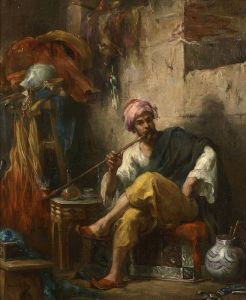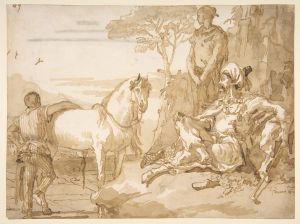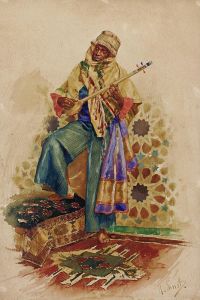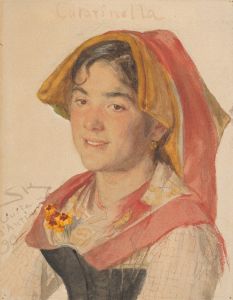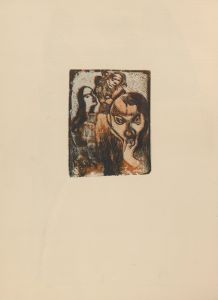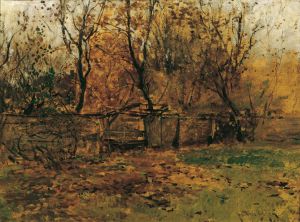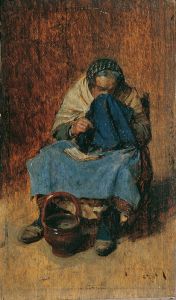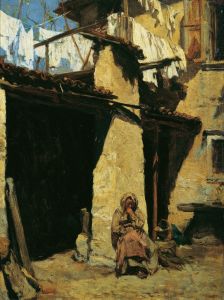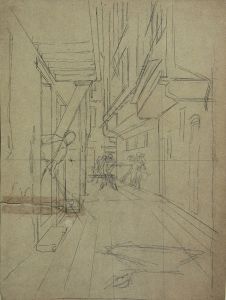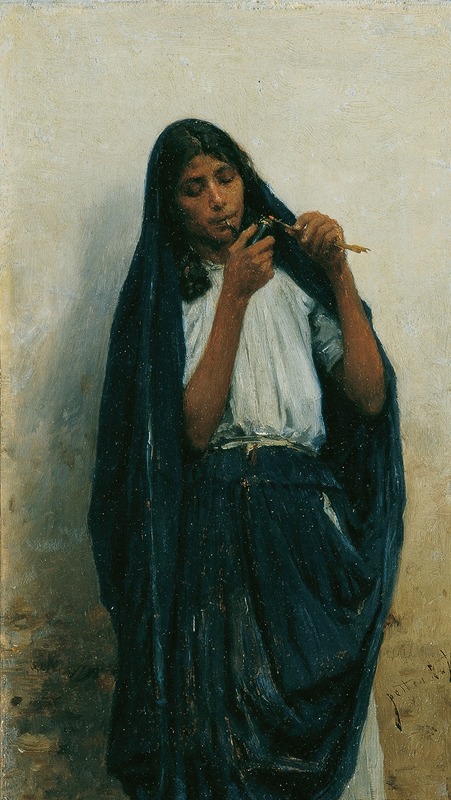
Zigeunerin
A hand-painted replica of August von Pettenkofen’s masterpiece Zigeunerin, meticulously crafted by professional artists to capture the true essence of the original. Each piece is created with museum-quality canvas and rare mineral pigments, carefully painted by experienced artists with delicate brushstrokes and rich, layered colors to perfectly recreate the texture of the original artwork. Unlike machine-printed reproductions, this hand-painted version brings the painting to life, infused with the artist’s emotions and skill in every stroke. Whether for personal collection or home decoration, it instantly elevates the artistic atmosphere of any space.
August von Pettenkofen was an Austrian painter known for his depictions of Hungarian and Romani life. One of his notable works is "Zigeunerin," which translates to "Gypsy Woman" in English. Pettenkofen was born in Vienna in 1822 and initially pursued a military career before dedicating himself to art. He studied at the Academy of Fine Arts in Vienna and was influenced by the Biedermeier style, which emphasized realism and attention to detail.
"Zigeunerin" is a reflection of Pettenkofen's interest in the everyday life and culture of the Romani people, whom he encountered during his travels in Hungary. The painting is characterized by its realistic portrayal and empathetic depiction of its subject, a Romani woman. Pettenkofen's work often focused on the marginalized communities of his time, and he is known for capturing the dignity and humanity of his subjects.
The painting is executed with a keen eye for detail and a subtle use of color, which are hallmarks of Pettenkofen's style. His approach was influenced by the broader European Romantic movement, which sought to capture the beauty and complexity of human emotion and experience. Pettenkofen's works often feature a muted color palette, which adds to the somber and reflective mood of his paintings.
"Zigeunerin" is part of Pettenkofen's larger body of work that includes numerous scenes of Hungarian and Romani life. His paintings are appreciated for their ethnographic interest and artistic merit, providing a window into the 19th-century life of these communities. Pettenkofen's work is significant not only for its artistic qualities but also for its historical value, as it documents the lives of people who were often overlooked by mainstream society.
Throughout his career, Pettenkofen received recognition for his contributions to art. He was a member of the Vienna Künstlerhaus and was awarded several honors, including the Order of Franz Joseph. His works are held in various collections, including the Belvedere Gallery in Vienna, which houses a significant number of his paintings.
Pettenkofen's legacy is that of an artist who brought attention to the lives of marginalized communities through his empathetic and detailed portrayals. "Zigeunerin" exemplifies his ability to capture the essence of his subjects with sensitivity and respect. His paintings continue to be studied and appreciated for their artistic and historical significance, offering insight into the cultural dynamics of 19th-century Central Europe.
In summary, "Zigeunerin" by August von Pettenkofen is a notable example of the artist's work, reflecting his interest in the Romani people and his skill in capturing the nuances of human expression and experience. The painting stands as a testament to Pettenkofen's dedication to portraying the dignity and humanity of his subjects, contributing to the broader understanding of the cultural and social landscape of his time.







